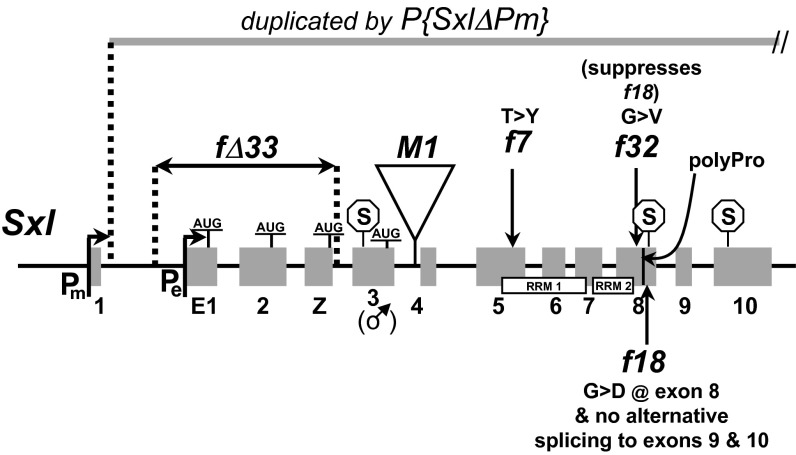Fig. 1.
Lesions in partial-loss-of-function alleles that are central to the present study: Sxlf7,M1, SxlM1,fΔ33, and Sxlf18,f32. Putative translation starts (AUG) and stops (S) are indicated in the context of the establishment promoter (Pe) that transiently responds very early to the primary sex-determination signal, the maintenance promoter (Pm) that operates thereafter, and the various exons, among which are the male-specific translation-terminating exon 3, which is responsible for the gene's sex-specific functioning, and exons 9 and 10 that encode alternative C-terminal isoforms important for germ-line but not somatic functioning. The two RNA-binding domains (RRM) are shown, as is the location of a proline-rich domain (black line) essential for germ-line activity that is just proximal to the site of alternative splicing out of exon 8 that is blocked in the female-sterile allele, Sxlf18. M1 is a transposon insertion that, by itself, leads to semiconstitutive feminizing expression of Sxl and hence dominant, male-specific lethality. Sxlf7,M1 and SxlM1,fΔ33 were selected for suppression of that male-specific lethality, and Sxlf18,f32 was selected for suppression of Sxlf18 sterility. SxlfΔ33 is an intragenic deletion that interferes only partially with female functioning, whereas P{SxlΔPm} is a duplication of the entire gene minus the Pm region. It provides wild-type Pe function but nothing more. Details regarding mutations that are not referenced in the text are given in Materials and Methods.

